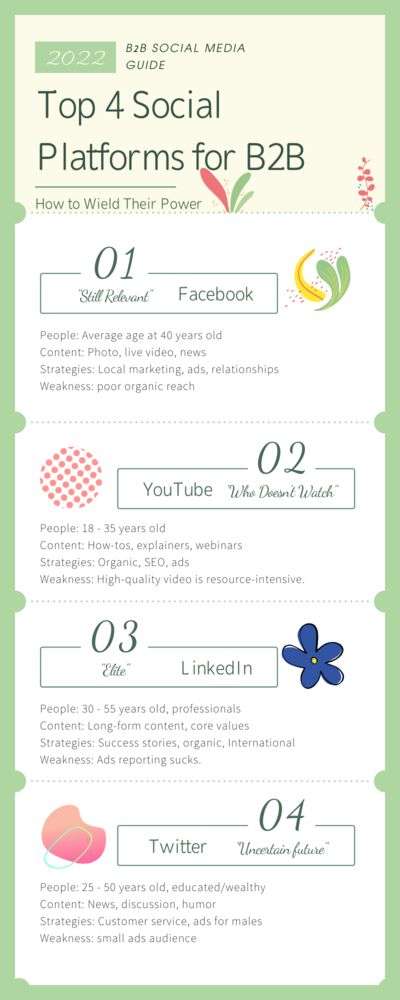Four Things To Do When Nobody Has Heard Of Your Brand
Whatever your 5-year or 10-year business objective is, your branding strategy sets the stage for future growth.

In the era of information overflow, one of the toughest challenges facing startup founders is - “Nobody knows about us.” Investing in the brand upfront (or when nobody knows about your business) will strengthen your long-term competitiveness and set your company up for success. And it's not a luxury but a necessity. This blog shares four tips to help you get off the ground and build a strong brand.
Startups don’t always fail because their business ideas were terrible or the products were not innovative. Surprisingly, new research finds over half of startups fail to launch due to issues with branding or product-marketing misfit.
How can you make customers buy your products if they haven't heard about your business? How can you claim a good market share if nobody knows you’re out there? How can you hit a billion-dollar valuation if your investors do not understand your business value?
The answer is simple: you can’t!
As a branding manager for a startup, I can vouch for the importance of branding. It's not something you can put off until you have more time, people, or money to invest in it. Instacart, Stripe, and Databricks stood out in the bloody battle of attention in 2021 because they initially did the following four things appropriately.
#1 It Always Comes Back to Your Brand Voice
It’s a common experience, and I’ve seen it myself — a new startup launches, only to see a slump in expectations. The startup has brainstormed its unique value positioning, founding stories, missions & value, and long-term growth plan. Logically, the startup should succeed.
But what was lacking?
The founders have often neglected how to introduce their business to the public - their brand voice, and stick to ONE voice.
A big part of a brand is how it makes customers feel. Today’s customers, especially the Gen Z population, seem to think of brands as "people" with whom they can establish an emotional connection. Therefore, from sales to marketing, recruiting, and investor relations, everyone in the company should talk about the brand in a consistent voice.
“You have to create a consistent brand experience however and wherever a customer touches your brand, online or offline.” – Angela Ahrendts, Apple Inc.
A start point to keep your branding consistent is to create a set of brand guidelines, including logo usage, tonality, messaging, packaging, etc. A good example is Salesforce which covers the rules and detailed applications.
However, there is more to branding than printed and digital things. It would help if you made sure everyone in the business follows the five critical aspects of brand voice:
- Character. Think of your brand as a person. Are you progressive or conservative? Funny or serious? Being aware of your brand’s character goes a long way.
- Purpose. When creating your content, you need to know its purpose and occasions. Social media posts and press releases are two completely different things facing different audiences. Make sure to communicate them properly.
- Audience. Your target audience determines your brand voice. You don’t want to use the wrong messages to piss off your customers or partners. You also don’t want to be funny if you’re trying to establish authority in your field.
- Language. The language is all about your storytelling. Please choose the correct language to convince your prospects you’re precisely what they need.
- Emotion. Gone are the days of the dull corporate image. People nowadays want to feel. The biggest question is: what do you want them to feel? Make sure your message evokes the proper emotions you want people to feel when they think of you.
It’s hard enough to stand out, but it's even more complicated if you’re trying to say too many things or be everything to everyone. Be one thing and give your customer something to latch on to.
#2 Keep Consistency in Visuals
Writing has a voice. So does design.
We live in a visual world, where visuals grab attention much more than text. While using eye-catching visuals is tempting, make sure your identity is coming through all of the different facets of your brand. Everything needs to fit together coherently and align with your brand strategy, from color palettes to fonts, graphics, and visual styles brand strategy.
Inconsistency in your visual style could sabotage your customers' trust and the authenticity of your communication. It’s also a distraction from the core message. Even if you’re refreshing your image as your startup is ready for the next round of funding, or targeting a new market segment, make sure that you don’t fall victim to inconsistent branding.
Yet you might be surprised at how many entrepreneurs forget about the importance of keeping consistency with their style guide once they get going. When Gap changed its logo, the company wanted to create a new and modern image:

If you don't have a lot of creative design budget, keep your visual simple and minimal. Like a sheet of white paper, your brand image is susceptible to every impression. Everything you associate with your brand image - whether a low-quality video or sketchy graphics - can create a solid and durable impact.
Indeed, branding strategies aren’t solely about the visual aspects. But that’s no excuse for letting that slide. You've given your brand a place to live with your site, social media accounts, and marketing materials.
#3 Choose the Right Platforms
With more than three and a half billion people using social media worldwide, social media is a great medium to raise brand awareness for startups.
Consumers are increasingly turning to official social media accounts to research new brands, learn more about them, get the opinions of others regarding them, and interact with the brands themselves.
However, many brands struggle to make their content stand out from the crowd. While there are multiple social media channels, it is not always the more, the merrier. Given a limited budget or resources for marketing, you need to focus on THE channel that can provide the most effective communication to your target audience. So how to pick up the platforms that fit your business needs?
- Study your customer persona, including:
- Demographic information such as age, gender, job title, and industry
- Social media footprint covers what platforms they use, when they go on them and why what content they like, and who else they’re following.
2. Different social media require different approaches, so here’s a brief overview of each one and how to harness their power to elevate your brand:

3. Experiment with your strategies at small scales and measure the conversations and engagements to figure out which ones you should be on. In short, you can only boost brand awareness if people see and interact with your content.
#4 Leverage Influencers for More Branding Exposure
Working with influencers is the next step to supercharging brand awareness. Influencers often have something many newbie brands don’t have – high levels of trust and credibility among their large following.
The first thing you need to do is find a relevant influencer, who shares your values, and whose audience is engaged. You want to work with influencers whose followers actively engage with their posts. Then it would help if you thought about what you want to achieve and how this partnership will benefit them.
Here are some common causes in that you could work with influencers:
- Work Together on a Cause – Millennials warm to brands who share their values and support causes they believe in. Consider working with an influencer to promote a cause that you both believe in.
- Create Sponsored Content – Sponsored content is a great way to boost brand awareness among a new audience. Despite being sponsored content, expert influencers know how to create it to look natural. They know what kind of content works well with their followers.
- Host Competitions – Let an influencer host the games or contests for you. This means that you’ll be reaching a much wider audience, while the influencer could also encourage their followers to follow your social media accounts if they want to win the prize.
Whatever your 5-year or 10-year business objective is, your branding strategy sets the stage for future growth. A consistent brand voice should apply to any external or internal communication channels, wherever and whenever your brand speaks. Branding awareness, in essence, is a result of both science and art. It is the science of understanding the psychology of your audience and leveraging data insights to inform your marketing strategies. It is also the art of building a legacy based on value, respect, and connections to leave a mark on this world. Good luck!

